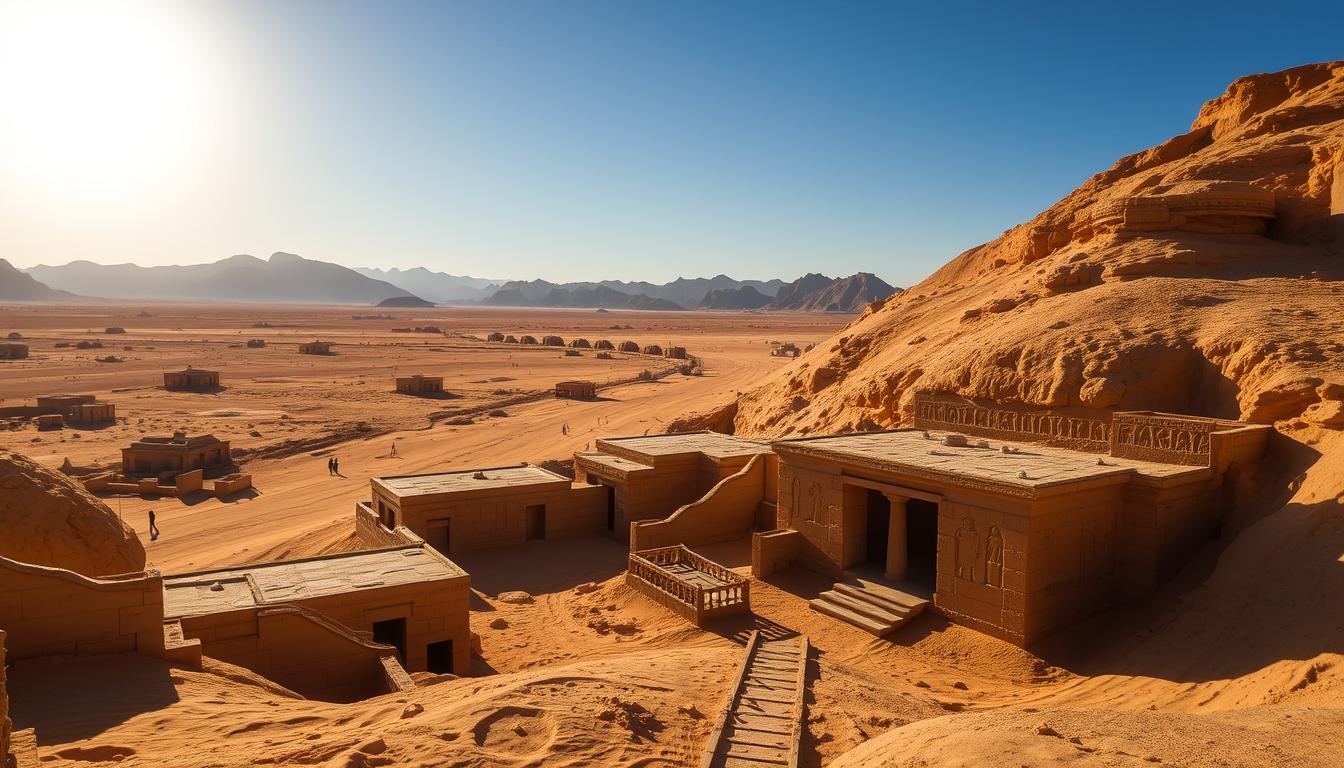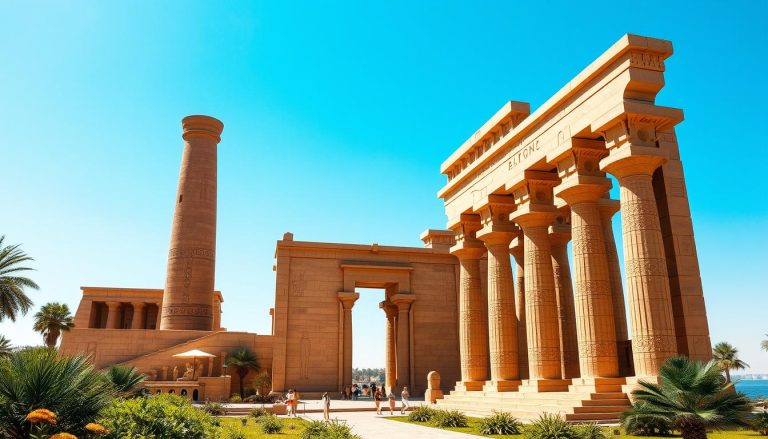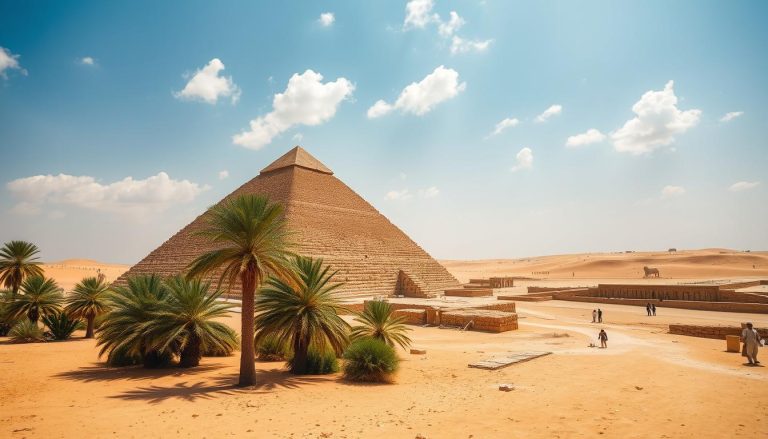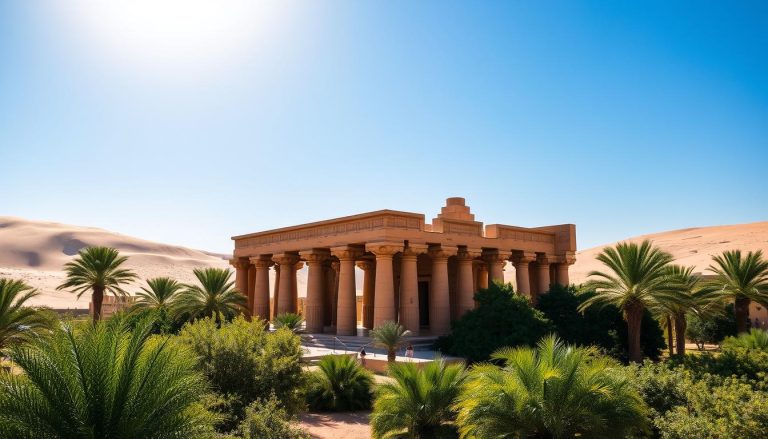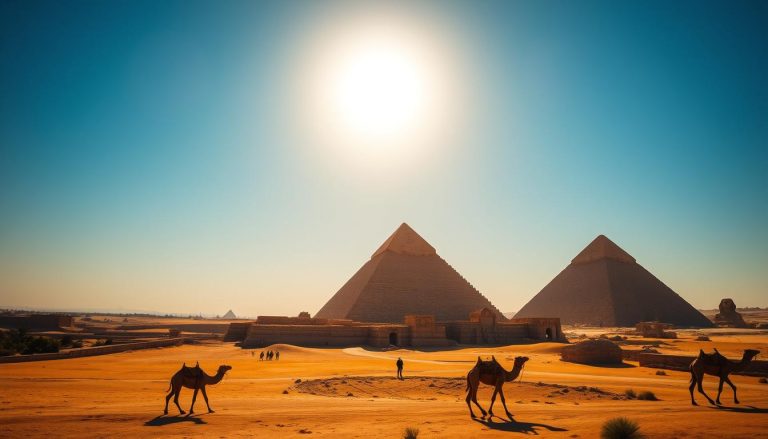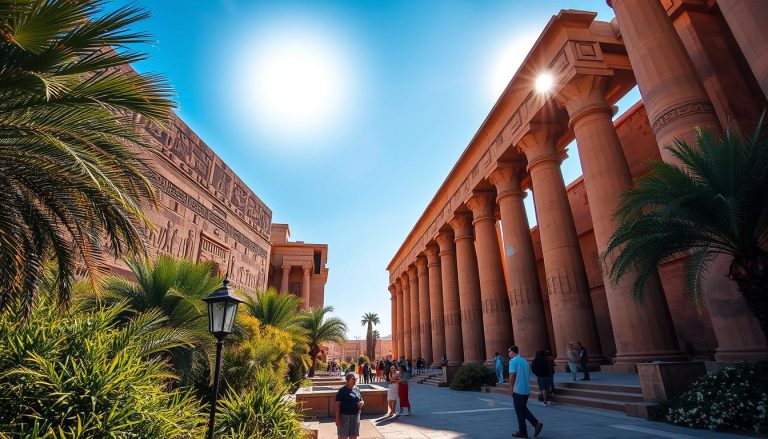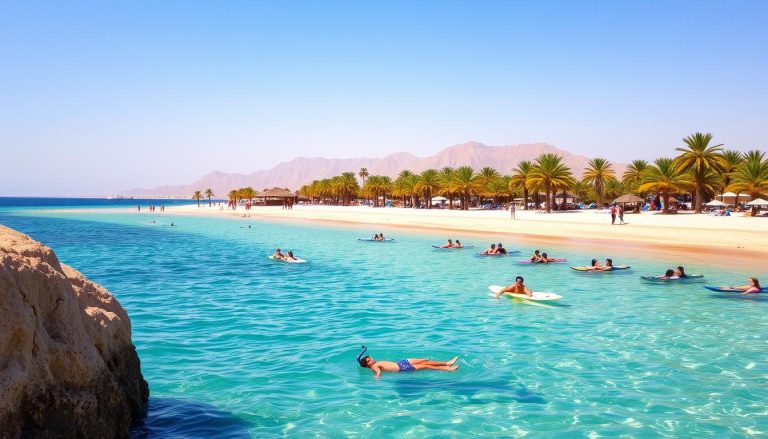Imagine standing where legendary pharaohs once walked. The Valley of the Kings in Luxor, Egypt, lets you do just that. It’s a place filled with ancient tombs and monuments. But what makes this valley so special, and what should you see when you visit?
Key Takeaways
- The Valley of the Kings houses over 60 tombs, primarily for pharaohs of the 18th, 19th, and 20th dynasties.
- Only a few of the 60+ tombs are open to the general public, with additional tickets required to visit certain tombs.
- Some of the most recommended tombs for visitors include KV1, KV2, KV6, KV8, KV11, KV14, KV15, KV16, KV43, and KV47.
- The Valley ticket includes access to ten tombs, with the possibility to visit three more with the main entrance ticket.
- The cost for additional tomb visits can range from 180 EGP to 1800 EGP, in contrast to the main ticket entrance fee.
Overview of the Valley of the Kings
The Valley of the Kings is a treasure trove of ancient Egyptian history. It’s located in Egypt’s heart, with the al-Qurn mountain towering above. This mountain looks like the pyramids of Giza. The valley was picked to keep the pharaohs’ tombs safe from robbers.
Historical Significance
The Valley of the Kings is very important in history. It was home to the tombs of Egypt’s most famous rulers. During the New Kingdom, a million people lived nearby, showing how important this place was.
The tombs are labeled with “KV” and a number. This makes it easy for archaeologists and visitors to find and explore them.
Location and Geography
The Valley of the Kings has two parts: the East Valley and the West Valley. The East Valley has most of the tombs. It’s nestled in limestone cliffs, near the Valley of the Nobles.
This location was chosen for its natural protection. It also reminded people of the nearby Mortuary Temples. The valley’s remote spot helped keep the pharaohs’ tombs safe from robbers.
Archaeological Importance
The Valley of the Kings is full of archaeological wonders. Over 60 royal tombs have been found here. These tombs have given us many artifacts and insights into ancient Egyptian culture.
The discovery of Tutankhamun’s tomb in 1922 is a highlight. It showed us the valley’s ongoing importance. It revealed treasures and gave us a glimpse into Egypt’s mysterious past.
Planning Your Visit to the Valley of the Kings
Planning a visit to the Valley of the Kings in Luxor, Egypt, requires some thought. Arriving early, around 6 AM, helps avoid crowds and heat. Spending at least half a day, or a full day, is best to see everything.
The Luxor Pass is a good option for seeing multiple sites, including the Valley of the Kings. It can save money if you’re staying a while. But, check which tombs are open as they change to protect them.
Choosing between a guided tour or going solo is key. Tours offer insights, but solo visits give more freedom. Remember, guides can’t talk inside the tombs to avoid overcrowding.
Be ready for security checks and extra tickets for special tombs like the Tomb of Tutankhamun (KV 62) or the Tomb of Ramses III (KV 11). With good planning, your visit to the Valley of the Kings will be unforgettable.
| Attraction | Additional Ticket Cost |
|---|---|
| Tomb of Tutankhamun (KV 62) | 500 EGP |
| Tomb of Ramses III (KV 11) | 180 EGP |
| Tomb of Ramses VI (KV 9) | 180 EGP |
| Tomb of Ay | 150 EGP |
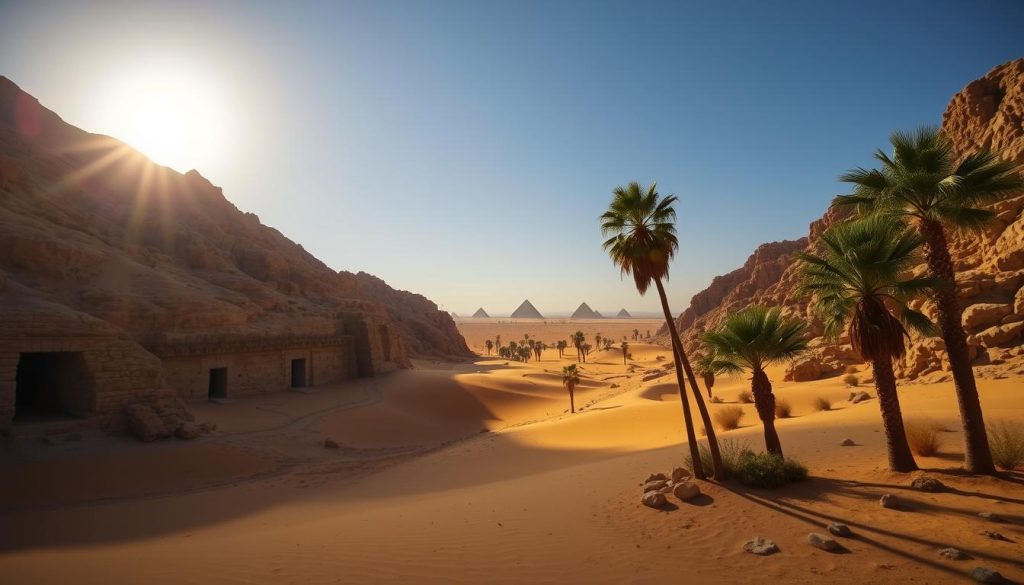
By thinking ahead and planning well, you’ll have a great time at the Valley of the Kings. It’s a top archaeological site in Egypt.
Getting to the Valley of the Kings
Visiting the Valley of the Kings on the Luxor West Bank is a must for anyone in Egypt. You can get there by different ways, each with its own charm.
Transportation Options
Taking a taxi from Luxor is a quick way to get there, about a 45-minute drive. Or, you can cross the Nile by ferry and then take a taxi to the site.
For a deeper experience, book a guided tour with an Egyptian tour operator. These tours include transportation and a guide to help you understand the site’s history.
Best Time to Visit
The best time to visit is early morning. It’s cooler and less crowded, making your visit more enjoyable.
Tour Guide vs. Independent Visit
Choosing between a guided tour or going alone depends on what you prefer. A guided tour offers insights, while going alone lets you explore at your pace. Remember, the 3-minute tram ride costs 20 EGP per person round trip.
Whether you choose a guided tour or go alone, the Valley of the Kings is unforgettable. It lets you experience ancient Egypt’s culture and history up close.
Admission Tickets and Passes
Planning your visit to the Valley of the Kings means thinking about tickets and passes. The Valley of Kings Entrance Fee is 600 EGP. This lets you see three tombs from the standard list. But, you need extra tickets for special tombs like Tutankhamun (500 EGP) and Seti I (1,800 EGP).
A tram ticket (20 EGP) is needed for moving around the site. This ticket helps you get to different parts of the Valley of the Kings.
The Luxor Pass is a good deal for those wanting to see more. It comes in standard and premium versions. The standard Luxor Pass is $130 USD for adults and $70 USD for students under 30 with a student ID. The Premium Luxor Pass, which includes Seti I and Nefertari’s tombs, costs $250 USD for adults and $130 USD for students.
The Photography Pass is an extra 300 EGP. It lets you use digital cameras and video equipment. This pass is great for capturing the amazing hieroglyphs and designs in the tombs.
- Valley of Kings Entrance Fee: 600 EGP
- Tutankhamun’s Tomb: 500 EGP
- Seti I’s Tomb: 1,800 EGP
- Ramesses V & VI Tomb: 180 EGP
- Tram Ticket: 20 EGP
- Luxor Pass (Standard): $130 USD for adults, $70 USD for students
- Luxor Pass (Premium): $250 USD for adults, $130 USD for students
- Photography Pass: 300 EGP
Remember, these prices might change. Always check the latest info before visiting the Valley of the Kings.
Valley of Kings, Egypt: Best Things to Do - Top Picks
The Valley of Kings in Egypt is a treasure trove for history buffs and fans of ancient Egyptian art. As you explore this necropolis, you’ll find many royal tombs to visit. You’ll also see amazing archaeological features and great spots for photos.
Must-Visit Royal Tombs
Don’t miss the tombs of Ramesses V and VI (KV9) with their colorful hallways and stunning ceilings. Seti I’s tomb (KV17) is known for its deep, rich colors. Ramesses IV’s tomb (KV2) is famous for its detailed wall reliefs from the Book of the Dead.
Notable Archaeological Features
Walking through the Valley of Kings, you’ll see incredible archaeological features. These show the ancient Egyptians’ skill and creativity. You’ll see amazing ceilings, well-preserved sarcophagi, and detailed wall reliefs. These features tell stories of the past.
Photography Opportunities
The Valley of Kings is a photographer’s dream. Some tombs let you take photos with a special pass, while others don’t. Always check the rules before you go. This way, you can capture the beauty of this ancient site.
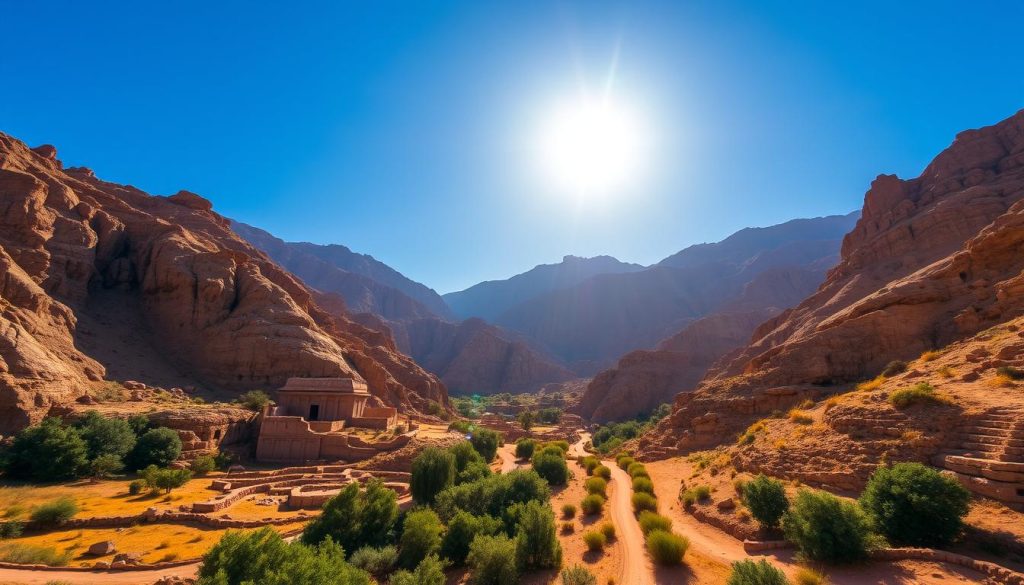
Exploring King Tutankhamun's Tomb
The tomb of King Tutankhamun is hidden in the Valley of the Kings in Egypt. It was found by Howard Carter in 1922. This tomb is famous for its Egyptian Treasures and the Golden Mask of Tutankhamun.
Tutankhamun’s tomb is smaller than others but still offers a special view. You can see the mummified remains of the young pharaoh. The tomb also has a detailed burial chamber. It’s very popular, so it gets crowded.
- See the beautifully decorated walls of Tutankhamun’s burial chamber. They are full of vibrant hieroglyphics and detailed artwork.
- Marvel at the Golden Mask of Tutankhamun. It’s a famous symbol of ancient Egyptian civilization.
- See the mummified remains of the young king. It’s a reminder of the mysteries and rituals of ancient Egyptian royalty.
The discovery of Tutankhamun’s tomb by Howard Carter in 1922 was a big moment in Egyptology. It showed us the treasures and practices of the Egyptian Treasures that were hidden for centuries. Today, visitors can dive into the history and grandeur of this legendary pharaoh’s final resting place.
| Ticket Price | Opening Hours | Tomb Highlights |
|---|---|---|
| 500 EGP | 6 AM – 5 PM |
|
“The tomb of Tutankhamun, with its breathtaking treasures, represents a unique and irreplaceable link to the past, offering a glimpse into the grandeur and mystery of ancient Egyptian civilization.”
Notable Tombs of Ramesses Dynasty
The Valley of the Kings is a famous necropolis in ancient Egypt. It has many royal tombs that show the greatness of the Ramesses dynasty. Tombs of Ramesses V and VI, and Ramesses III are especially famous.
Ramesses V and VI Tomb
The tomb of Ramesses V and VI, known as KV9, is a masterpiece of ancient Egyptian art and architecture. It has a long, decorated hallway and an amazing astronomical ceiling in the burial chamber. The walls are covered in intricate hieroglyphics and funerary art, giving a peek into the ancient Egyptian architecture of that time.
Ramesses III Tomb Features
Another must-see is the tomb of Ramesses III, identified as KV11. It’s one of the biggest tombs in the valley, with long passageways and detailed artwork behind glass. Visitors can see the grandeur of the Ramesses dynasty and the growth of ancient Egyptian funerary practices through the hieroglyphics and architecture of this tomb.
Both the tombs of Ramesses V and VI, and Ramesses III, show the amazing artistry and historical importance of the Valley of the Kings. They give visitors a deep connection to the ancient Egyptian past.
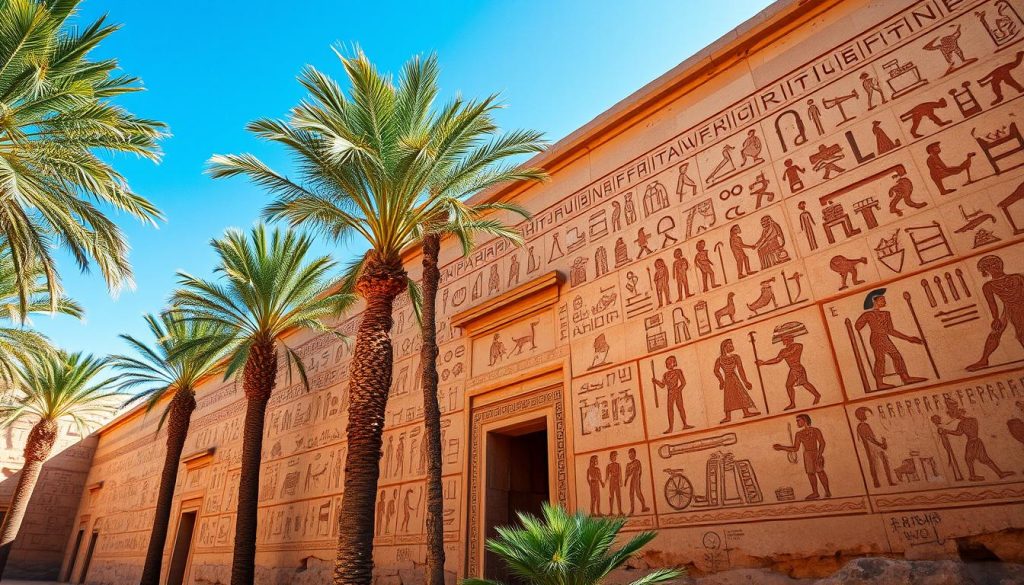
Photography Rules and Guidelines
When you visit the Valley of the Kings, knowing the photography rules is key. In the past, you might have needed a special pass for photos. But now, you can usually take pictures with DSLR cameras in some tombs without a permit.
But remember, no flash photography is allowed in the Valley of the Kings. This rule helps keep the ancient art safe. Always check the latest photography rules with your guide or local officials when you arrive.
| Tomb | Photography Policy | Ticket Price |
|---|---|---|
| Valley of the Kings (General Admission) | Photography allowed (no flash) | 600 EGP |
| Ramesses V and VI Tomb (KV9) | Photography allowed (no flash) | 180 EGP |
| Tutankhamun’s Tomb (KV62) | Photography not allowed due to small size and high traffic | 500 EGP |
The Valley of the Kings is still being explored, and you might see excavators around. It’s important to be careful and respect the site while taking photos.
Following the Valley of Kings Photo Policy and Egyptian Antiquities Preservation rules makes your visit special. You’ll get to see amazing sights and learn a lot.
Essential Tips for Visitors
Planning your visit to the Valley of the Kings, a UNESCO World Heritage site near Luxor, Egypt? Be ready. Here are some key tips for a smooth and memorable trip in this ancient desert.
What to Bring
- Comfortable walking shoes: The Valley of the Kings is all about walking. Wear sturdy, breathable shoes.
- Sun protection: Bring a hat, sunglasses, and high-SPF sunscreen to protect against the desert sun.
- Water: It’s hot and dry in Luxor. Carry lots of water to stay hydrated.
- Cash: Egyptian pounds are needed for tickets, guides, and tips. The cost of an Egyptian tourist visa is $25 USD per person. It usually takes about 48 hours to receive the e-visa, but it can take up to a week.
Best Times to Avoid Crowds
To avoid crowds and heat, visit early in the morning, before 8 AM. The Luxor is Egypt’s second most visited destination after Cairo/Giza. Early arrival means a more peaceful visit. Plan your trip in the shoulder seasons of March-April or October-November for better weather.
Keep in mind, there might be security checks and some tombs closed for restoration. With some planning and the right gear, you’re set to explore the Valley of the Kings’ history and landscapes.
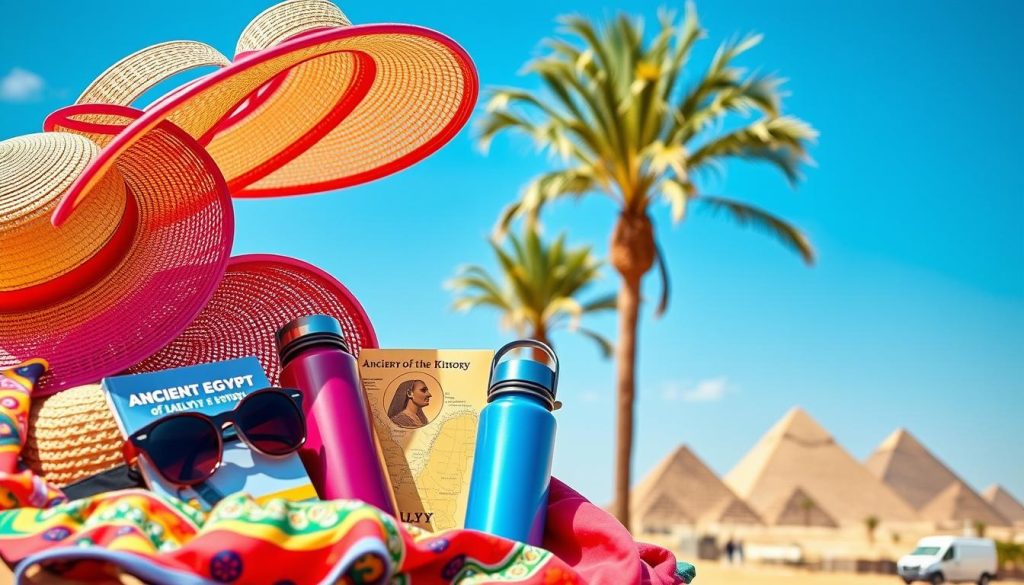
Cultural and Historical Significance
The Valley of the Kings in Egypt is very important. It shows what ancient Egyptians believed about life after death and their rulers. The detailed tomb art, like scenes from the Book of the Dead and star ceilings, tell us a lot about their beliefs and the universe.
People have lived in the Valley of the Kings since about 3200 BC. It’s home to many tombs, including the famous one of Tutankhamun. Finding and studying these tombs has helped us learn a lot about ancient Egyptian art, burial customs, and the Pharaohs’ legacy.
The Valley of the Kings is more than just old ruins. It shows how important it was to the ancient Egyptians to help the dead on their journey to the afterlife. The detailed tomb art, with scenes from the Book of the Dead, shows the complex rituals and beliefs of the Pharaohs.
“The Valley of the Kings is a remarkable testament to the ancient Egyptian civilization, its beliefs, and its enduring artistic and cultural heritage.”
The Valley of the Kings is also part of the larger Luxor region. This area has been full of ancient Egyptian life for thousands of years. Nearby, you can find the Karnak Temple Complex, the Avenue of Sphinxes, and the Colossi of Memnon. These sites add to the area’s rich history and culture.
In summary, the Valley of the Kings is a key part of ancient Egyptian history and culture. Its discovery and ongoing study have greatly helped us understand this fascinating civilization and its lasting influence on the world.
Conclusion
Your trip to the Valley of the Kings in Egypt was truly amazing. You saw incredible art and learned about ancient history. This place connects us to a great civilization.
New discoveries keep making the Valley of the Kings exciting. Whether you saw King Tutankhamun’s tomb or the Colossi of Memnon, it was unforgettable. It’s a must-see for anyone interested in Egypt.
As you leave, remember your time in the Valley of the Kings. It’s a UNESCO World Heritage site. Let it inspire you to keep exploring Egypt’s rich culture and history.
